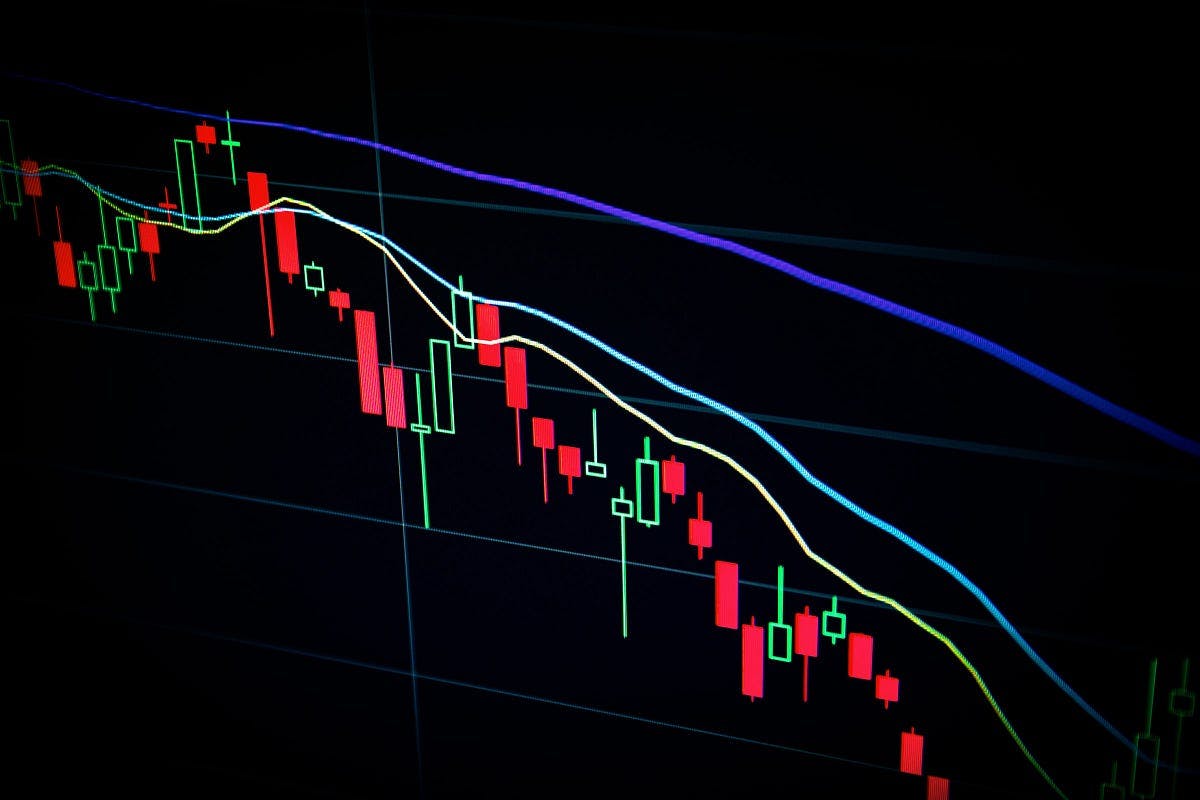Successful ones anyway…
Crypto investing is a wild ride to say the least. The best way I would describe the crypto investing space is this: think of a stock exchange where every company in the exchange is a seed-stage or series-A startup with unproven fundamentals and even less proven financials. Then allow anyone to invest with relatively small amounts of $$ and expertise and open the markets 24/7/365.

Crypto is still an extremely early-stage industry. This is like the internet industry pre-search engines. The very nature of the industry is built on hype and potential. I’ve already written previously about how I believe blockchain technology can potentially change the world, so you know I’m bullish on crypto in the long-run. But crypto has some serious hurdles in the short-run that it will need to overcome in order to really take its place on the world stage, upending traditional markets like it’s supposed to.
But high-level discussions of the potential of crypto and the state of the market are best left to another article. For now, I wanted to discuss what I see as the three different kinds of crypto investors and talk their pros/cons in terms of investing methodology so that you can adapt parts of their styles to create your own investing methodology and hopefully turn a profit.
1. The “Hodler”
The term “Hodler” was coined some time in crypto days past on Reddit or 4Chan or 8Chan or some other place where crypto nerds come together to commiserate. Basically, a “Hodler” is someone who’s in this for the long-game. They span the range of, “I’m always buying cause these assets will be worth a lot in the future” to “I take profits from time to time, but I’m always keeping some assets for the future in case they 100 or 1000x.”
“Hodlers” are defined by their faith in the crypto ecosystem and its long-term financial viability. Some are motivated by money, seeking 100x or greater returns over the next 10–20 years, while some are motivated by ideology: simply put, they believe that the fundamentals of crypto are revolutionary, and they want to be a part of that.

Strengths of “Hodling”
Historically speaking, the “Hodlers” who didn’t get so-called “paper hands” (aka, sold their assets) in market downturns are the ones who are the most in the green on crypto if they invested even in the midst of the historic 2017 bull run.
If you’re patient, “Hodling” is likely to be a lucrative investment methodology for you. You’re just going to be waiting for that bull run before you’ll see those beautiful green $$ in your portfolio. And it’s a good idea to take profits on the way up, lest you fall into another crash and lose out on all that paper profit you were too greedy to exercise.
This methodology is also perfect for those who believe in the long-term potential of crypto and its fundamentals.
Weaknesses of “Hodling”
You could end up in a pool of regret if you never took profits in a bull run and saw your accumulated portfolio take a dive in another crash like the one we just saw on 5/18–19/2021.

Aside from potentially being vulnerable to paper losses, the biggest weakness of the “Hodler” is that they can be tunnel-visioned and dismiss legitimately bad news or trends that point to a bear market or that undermine their favorite crypto projects. Because you essentially need to be coated in a thick layer of optimism at all times to survive, emotionally, as a “Hodler” — shoving off the ups and downs of the markets cause you’re not selling — you can easily dismiss bad news that could expose you to serious losses.
This is obviously bad if you dismiss signs of an overheated market and suffer large paper losses across your portfolio, but this is much worse if you ignore signs that your favorite project is not living up to its potential and is running out of steam. You may stubbornly hold onto that asset longer and longer, watching the value drop lower and lower over time as the project runs out of steam. This is how you end up with duds in your portfolio: assets that essentially dropped to zero where you sustained heavy losses and never sold.
Keep an open mind about the market, however, and you can mitigate these issues.
2. Meme-coin Mike
The second type of crypto investor is the one who follows the hype. For simplicity’s sake, we’ll refer to this investor as Meme-coin Mike cause I like alliteration as much as the next guy.
Mike makes his investment decisions on a cacophonous mix of trending Reddit posts, soaring asset prices, and Elon Musk’s tweets. He wants to get in on the sick profits he keeps hearing about, hoping to turn his $1,000 into $1M in just a few years.
All jokes aside, this is obviously a caricature, but there are many retail investors who are buying into crypto with relatively little regard for learning the fundamentals or understanding what they’re investing in. They hear stories of people making millions of dollars with a fairly small initial investment and want to take a shot at it themselves. Unfortunately, that’s basically like playing the lottery.
Mike’s strengths
If it feels like I’m dumping on Mike a bit, that’s because, well, I am. But there are some legitimate strengths to Mike’s investment “thesis” as well.
A smart investor could do short-term trades based on hype alone. This kind of investing would not be seeking life-changing returns, but a savvy investor with the time to keep up with the space could easily chase short-term trades (where they only hold the asset a few days to a few weeks) where the goal is to net a clean 5–20% gain in a very short window and get out.
Given the volatility of the crypto space, this kind of hype investing is likely to continue to be potentially profitable for years to come. However, this kind of investing is only likely to remain profitable as long as plenty of other Mikes still exist in the space. As crypto gets more sophisticated, this type of trading will become a lot less profitable.
Mike’s weaknesses
The obvious weakness is that if you’re only buying on the up-swing, you’re opening yourself up to huge losses in a pull-back. Plus, Elon could tweet something pumping a worthless coin where you’re left holding the bag if you didn’t get out quick enough.
The problem with hype is that it’s ethereal. And eventually fundamentals will always overtake hype and reality will come crashing in like the Kool-Aid Man.
Also, if you were chasing those short-term 5–20% gains, you would need to be investing with a more substantial amount of money to be able to make a decent living, as you’ll have a limited number of opportunities to profit on hype.
3. Mr. Volatility
Mr. Volatility is like the antithesis of Mike. Mr. Volatility likes to play the market, taking advantage of crypto’s often 5+% daily swings to pull profits off of short-term trades. In many ways, this kind of investor takes the strengths from Mike and turns those up to 11.
Mr. Volatility isn’t afraid of riskier trades, betting on finding those big pumps and avoiding (or better yet, shorting) the big dips. Rather than trading purely on hype, Mr. Volatility looks for a combination of hype, applications, and news cycles to make his investment decisions, but he’s always trying to trade favorably on the volatility in either direction.

Photo credit: Behnam Norouzi.
Mr. Volatility’s strengths
If you have a steely constitution and high tolerance for the emotional ups and downs of crypto’s volatility, you can make some good money playing that volatility for profit.
Mr. Volatility is basically characterized by his high-risk attitude, and as with most things in life: high risk can often come with high reward. You just have to be very careful and avoid making emotional decisions.
Mr. Volatility’s weaknesses
The crux of Mr. Volatility’s weaknesses basically come down to whether or not you end up making emotional decisions. Because this investing strategy is so risky, you have to be extra careful to act as emotion-less as possible.
If you invest like Mr. Volatility, you could be in for healthy profit or disastrous losses. If you over-leverage yourself, make a bad short, or make a move a little too quickly without doing the right due diligence, you can easily end up on the losing end of an expensive trade. And if you don’t spread out your risk over a larger amount of capital, you’re really exposing yourself to potentially catastrophic losses.
That brings us to Mr. Volatility’s other big weakness: in order to make enough money to make the effort worth it, you need a larger amount of capital to invest with, just like Meme-coin Mike.
What kind of investing should I do?
You may be wondering now, what kind of investing is right for me? How can I make money in crypto?
The answer for the overwhelming majority of people will be some variation on “The Hodler”. This is because “hodling” is the most consistent long-term strategy for building wealth, not just in crypto but in basically every kind of investing. And especially if you’re only working with a few thousand $$, or really anything less than $100k, then the strategies involved in chasing hype like Meme-coin Mike or playing volatility like Mr. Volatility are going to have a lot less potential upside while still having a lot of risk.
Remember that investing in crypto is a lot like investing in promising early stage startups. This technology is still very early in its development, and we likely haven’t even seen the projects that will revolutionize the world yet (which means there will be plenty more time to find that next moon-coin).
In the meantime, start your crypto investing journey by learning about the space and dipping your toe in. And always only invest what you can afford to lose and take your time in deciding how to invest. It’s okay to be conservative here, and get more adventurous as you learn more about the crypto world. Here are some articles I’ve written/will be writing soon that can get you started:
(Introduction to crypto) Blockchain is the future of digital infrastructure
(Coming soon) There’s one undervalued crypto project — LUNA
(Coming soon) Bitcoin is worthless; crypto is not
(Coming soon) NFTs: so much more than art
And more to come…
If you enjoyed this article, consider following me here on Medium so you can see my future crypto articles in your feed.
Thanks for reading!
Important legal note: I am in no way a financial advisor or fiduciary agent. My words should not be construed as individual financial advice but rather my own opinions and speculations about the future. Always, always, always do your own research and learn about something before investing your money in it. I intend for my articles to simply act as a starting point in your investment research process.

